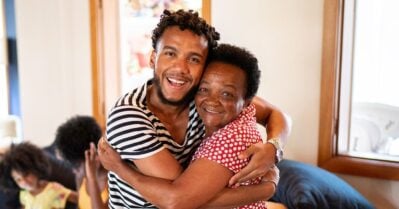Reducing Student Referrals to the Juvenile Justice System

Image Credit: Baltimore Algebra Project
In many jurisdictions, schools are a significant source of juvenile justice referrals. Verbal and physical altercations can lead to school-based arrests, court referrals and pushout. A new resource from the Baltimore Algebra Project helps students resolve conflicts that can lead to being encouraged — or even forced — to exit school and pushed into the juvenile justice system. The Student Conflict Resolution Toolkit, funded by the Annie E. Casey Foundation, provides practical methods for de-escalating disputes, increasing self-awareness and restoring relationships in schools and beyond.
“Unlike most toolkits created by adults, this one is designed by students, for students, centering their experiences and leadership,” said Ismanuela Denis, a program associate with the Foundation’s Juvenile Justice Strategy Group. “The guide helps strengthen school climate through restorative practices and encourages students to foster resilience and develop lifelong skills in problem-solving, interpersonal communication, healthy relationships and a sense of belonging.”
Building a Response to Conflict
The Baltimore Algebra Project is a youth-led math literacy organization that works to improve the lives of young people in Baltimore City. It conducted more than two dozen focus groups to document young people’s views about conflict and ways of resolving it. The findings from these conversations, combined with student research on conflict resolution, were the basis for a first draft of the toolkit.
Students who participated in the focus groups reviewed the draft to see if it accurately reflected their views. The toolkit acknowledges that conflict is an inevitable consequence of being human. You may not be able to avoid conflict, but you can choose how you respond to it.
“If young people have the tools to reflect on conflict and not have it reach a fever pitch so frequently,” said Jamal Jones, co-director of the Baltimore Algebra Project, “We’ll likely reduce the number of student referrals and the number of young people going into the carceral system.”
Tools, Principles and Practices for Resolving Conflict
The Student Conflict Resolution Toolkit elevates practices and policies that prevent youth from entering the justice system and make schools safe learning environments for all. The toolkit features a selection of support resources:
- a glossary of key words to promote a shared understanding among students and teachers of conflicts and their resolution;
- a list of books, videos and podcasts that provide additional information about conflict resolution; and
- a series of questions aimed at considering the perspective of others and allowing students to see all sides of a conflict.
A compact checklist summarizes nine principles of conflict resolution, which include:
- Principle 1: Gotta Communicate, Dat’s Law — How we communicate largely dictates whether any form of conflict intensifies or de-escalates.
- Principle 2: Natures of Conflict — To resolve conflict, we must focus on its root causes — emotions, context, and environment — not just the triggering events.
- Principle 3: Know the Beast — Contain and cool conflict before it grows out of control.
- Principle 4: Dial Down Flames — Avoid reacting from emotion or trying to “win.” The goal is to contain and cool conflict before it grows out of control.
- Principle 5: Pressure Busts Pipes & Makes Diamonds — Manage pressure with tools to prevent explosive reactions and encourage positive transformation.
- Principle 6: It Takes Time — Conflict resolution isn’t instant; taking breaks, resolving issues in small steps and respecting others’ timing can prevent escalation.
- Principle 7: Mo’ Money, Mo’ Platforms, Mo’ People — Containing the people or platforms involved conflict prevents it from growing bigger.
- Principle 8: Know What You’re Looking For — Conflict prevention begins with understanding context, emotions and your own limits.
- Principle 9: Consult the Confidants — A trusted confidant can help de-escalate conflict by offering perspective and guidance.
The student authors suggest various methods to “dial down the flames” in any combustible situation, such as:
- resisting emotional replies to insults or criticism until you reflect on your feelings;
- identifying and assessing your reasons for being involved in the conflict;
- prioritizing mutual understanding over establishing who is right or wrong; and
- finding ways of repairing relationships during conflict — for example, putting pride aside and apologizing.
Diversion and Prevention
Young people don’t transition into adulthood in isolation. The environments and support networks around them — at home, work and school — all help shape their growth.“Part of helping young people navigate adolescence is making schools safer and more welcoming,” Denis said.
The Casey Foundation’s investment in the Student Conflict Resolution Toolkit is part of a larger effort to prevent youth from needing to enter the justice system, keeping them in the classroom or on other positive paths toward long-term success. Fostering supportive educational spaces is particularly essential for students considered at high risk of justice system involvement or those already traversing that system.
Related Resources
Learn about preventing school pushout and justice system involvement






